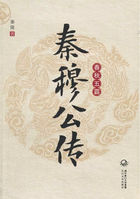At last Perkin Warbeck ran away,and took refuge in another sanctuary near Richmond in Surrey.From this he was again persuaded to deliver himself up;and,being conveyed to London,he stood in the stocks for a whole day,outside Westminster Hall,and there read a paper purporting to be his full confession,and relating his history as the King's agents had originally described it.He was then shut up in the Tower again,in the company of the Earl of Warwick,who had now been there for fourteen years:ever since his removal out of Yorkshire,except when the King had had him at Court,and had shown him to the people,to prove the imposture of the Baker's boy.It is but too probable,when we consider the crafty character of Henry the Seventh,that these two were brought together for a cruel purpose.A plot was soon discovered between them and the keepers,to murder the Governor,get possession of the keys,and proclaim Perkin Warbeck as King Richard the Fourth.That there was some such plot,is likely;that they were tempted into it,is at least as likely;that the unfortunate Earl of Warwick-last male of the Plantagenet line-was too unused to the world,and too ignorant and simple to know much about it,whatever it was,is perfectly certain;and that it was the King's interest to get rid of him,is no less so.He was beheaded on Tower Hill,and Perkin Warbeck was hanged at Tyburn.
Such was the end of the pretended Duke of York,whose shadowy history was made more shadowy-and ever will be-by the mystery and craft of the King.If he had turned his great natural advantages to a more honest account,he might have lived a happy and respected life,even in those days.But he died upon a gallows at Tyburn,leaving the Scottish lady,who had loved him so well,kindly protected at the Queen's Court.After some time she forgot her old loves and troubles,as many people do with Time's merciful assistance,and married a Welsh gentleman.Her second husband,SIR MATTHEW CRADOC,more honest and more happy than her first,lies beside her in a tomb in the old church of Swansea.
The ill-blood between France and England in this reign,arose out of the continued plotting of the Duchess of Burgundy,and disputes respecting the affairs of Brittany.The King feigned to be very patriotic,indignant,and warlike;but he always contrived so as never to make war in reality,and always to make money.His taxation of the people,on pretence of war with France,involved,at one time,a very dangerous insurrection,headed by Sir John Egremont,and a common man called John a Chambre.But it was subdued by the royal forces,under the command of the Earl of Surrey.The knighted John escaped to the Duchess of Burgundy,who was ever ready to receive any one who gave the King trouble;and the plain John was hanged at York,in the midst of a number of his men,but on a much higher gibbet,as being a greater traitor.Hung high or hung low,however,hanging is much the same to the person hung.
Within a year after her marriage,the Queen had given birth to a son,who was called Prince Arthur,in remembrance of the old British prince of romance and story;and who,when all these events had happened,being then in his fifteenth year,was married to CATHERINE,the daughter of the Spanish monarch,with great rejoicings and bright prospects;but in a very few months he sickened and died.As soon as the King had recovered from his grief,he thought it a pity that the fortune of the Spanish Princess,amounting to two hundred thousand crowns,should go out of the family;and therefore arranged that the young widow should marry his second son HENRY,then twelve years of age,when he too should be fifteen.There were objections to this marriage on the part of the clergy;but,as the infallible Pope was gained over,and,as he MUST be right,that settled the business for the time.
The King's eldest daughter was provided for,and a long course of disturbance was considered to be set at rest,by her being married to the Scottish King.
And now the Queen died.When the King had got over that grief too,his mind once more reverted to his darling money for consolation,and he thought of marrying the Dowager Queen of Naples,who was immensely rich:but,as it turned out not to be practicable to gain the money however practicable it might have been to gain the lady,he gave up the idea.He was not so fond of her but that he soon proposed to marry the Dowager Duchess of Savoy;and,soon afterwards,the widow of the King of Castile,who was raving mad.
But he made a money-bargain instead,and married neither.
The Duchess of Burgundy,among the other discontented people to whom she had given refuge,had sheltered EDMUND DE LA POLE (younger brother of that Earl of Lincoln who was killed at Stoke),now Earl of Suffolk.The King had prevailed upon him to return to the marriage of Prince Arthur;but,he soon afterwards went away again;
and then the King,suspecting a conspiracy,resorted to his favourite plan of sending him some treacherous friends,and buying of those scoundrels the secrets they disclosed or invented.Some arrests and executions took place in consequence.In the end,the King,on a promise of not taking his life,obtained possession of the person of Edmund de la Pole,and shut him up in the Tower.
This was his last enemy.If he had lived much longer he would have made many more among the people,by the grinding exaction to which he constantly exposed them,and by the tyrannical acts of his two prime favourites in all money-raising matters,EDMUND DUDLEY and RICHARD EMPSON.But Death-the enemy who is not to be bought off or deceived,and on whom no money,and no treachery has any effect-presented himself at this juncture,and ended the King's reign.
He died of the gout,on the twenty-second of April,one thousand five hundred and nine,and in the fifty-third year of his age,after reigning twenty-four years;he was buried in the beautiful Chapel of Westminster Abbey,which he had himself founded,and which still bears his name.















